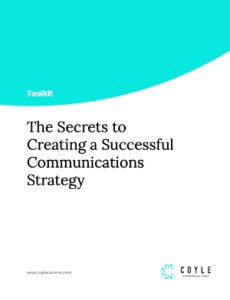Last night I had dinner with a director of an organization who asked me to explain how Twitter could work for him. This was somewhat of a loaded question. He had a Twitter account for about three years with zero tweets. I opted to phrase it in simple terms: Twitter is very much a vehicle for ideas, similar to when you are thinking of creating a concept, a piece of research, a design – and then taking the gist of that idea and communicating it in real-time.
Why did I use this concept? The director is a figurehead in his field – a very well-known expert in his line of work – and I am sure many out there would love to hear what he is thinking, or his latest idea, or even his latest research or project. I explained to him that to share these snippets as they happen will create anticipation for what will come and create more interest and excitement around his next steps. He did cringe a bit about revealing his ideas before they were officially ready, which I translated as when it is printed, peer-reviewed and in a journal or magazine.
He warned me that this could be dangerous as not “everyone is there” and too much focus on Twitter (and social media in general) would mean missing out on the more important conversations. He is right, partially, but he is also partially wrong.
I think all of you can relate to this comment and may have even heard it before from other leaders in your organizations. I explained to him though, to the contrary, that social media is great place to create and lead these conversations.
In our editorial calendars and lists and day-to-day management of our channels through HootSuite, we often forget that to lead the conversation and curate important discussions from others is a sure-fire way to gain attention and to build brand awareness. As in the offline world, content is king. It is essential that this be identified in your social media strategy early on along with examples of conversations that lead discussions with flexibility and real-time reactions and conversations that happen as external events take shape.
It is not easy, but creating a new post or tweet that may add new insight or angles to an existing dialogue, will help gain more attention to your channels as well as enhance your image as a doer rather than a follower. It will also make your organization an organization to watch. This also extends outside your organization to like-minded organizations. Many of you are probably engaging in joint campaign promotions in the non-profit world and many of you in corporate may be doing the same as well with partners.
I also like to encourage my social media team to reach out to their counterparts in these organizations and to organize and lead monthly Google+ Hangouts to talk about opportunities to co-brand and co-promote and to share editorial calendars – taking the online curation concept offline to further extend your brand.
Quick Tips:
Content is still king. Curating content and leading the conversation on topics will help you build brand awareness online, which will extend offline.
Any press is good press. Do not be afraid to raise topics of discussion that others are afraid to touch. But do it in a way that fits with your organization’s culture.
Sway reluctant leaders. Social media should be part of your overall approach to reach your audience, to not “be there” is no longer an option for most. Show them their peers’ activity and why their lack of voice is ultimately minimizing their brand impact.



